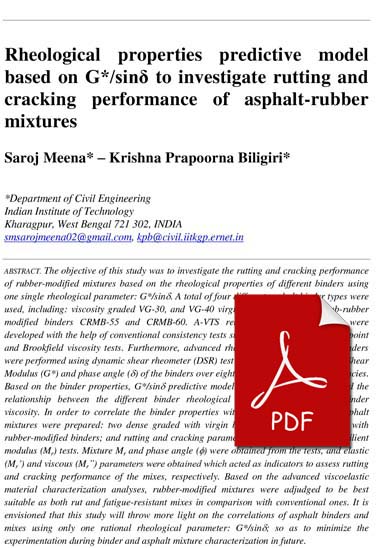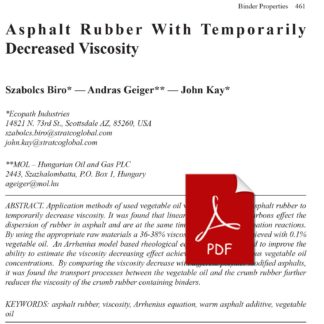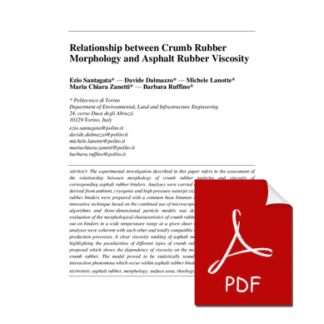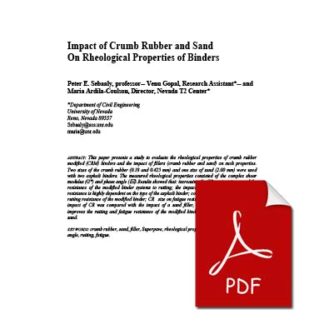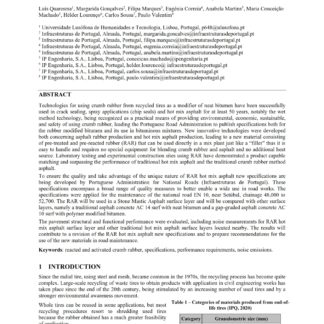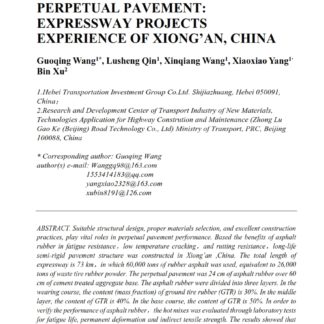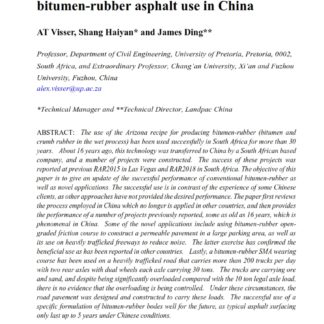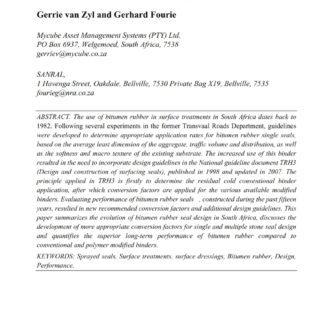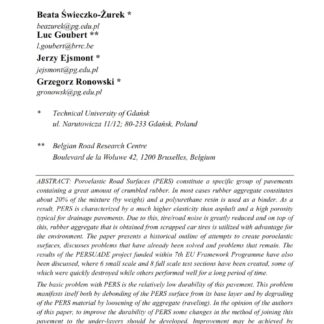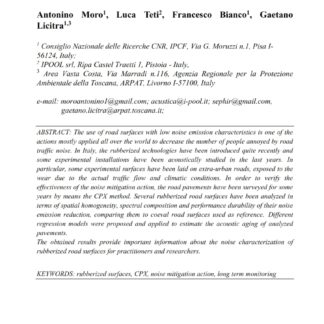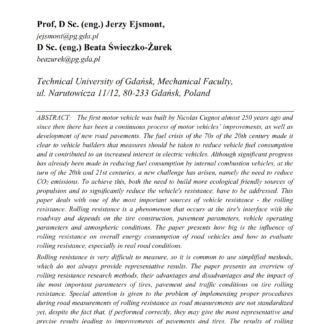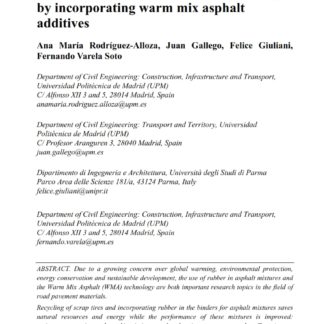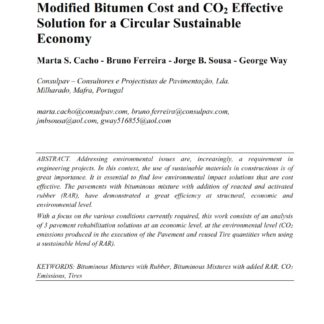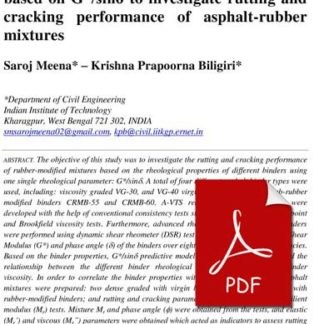Description
The objective of this study was to investigate the rutting and cracking performance of rubber-modified mixtures based on the rheological properties of different binders using one single rheological parameter: G*/sin. A total of four different asphalt binder types were used, including: viscosity graded VG-30, and VG-40 virgin binders, and two crumb-rubber modified binders CRMB-55 and CRMB-60. A-VTS relationships of the binders were developed with the help of conventional consistency tests such as penetration, softening point and Brookfield viscosity tests. Furthermore, advanced rheological tests on asphalt binders were performed using dynamic shear rheometer (DSR) test chiefly to estimate Complex Shear Modulus (G*) and phase angle () of the binders over eight temperatures and ten frequencies. Based on the binder properties, G*/sin predictive model was developed to understand the
relationship between the different binder rheological parameters, specifically, binder viscosity. In order to correlate the binder properties with that of the mixes, four asphalt mixtures were prepared: two dense graded with virgin binders and two gap-graded with rubber-modified binders; and rutting and cracking parameters were obtained using resilient modulus (Mr) tests. Mixture Mr and phase angle () were obtained from the tests, and elastic (Mr’) and viscous (Mr”) parameters were obtained which acted as indicators to assess rutting and cracking performance of the mixes, respectively. Based on the advanced viscoelastic material characterization analyses, rubber-modified mixtures were adjudged to be best suitable as both rut and fatigue-resistant mixes in comparison with conventional ones. It is
envisioned that this study will throw more light on the correlations of asphalt binders and mixes using only one rational rheological parameter: G*/sin; so as to minimize the experimentation during binder and asphalt mixture characterization in future.

